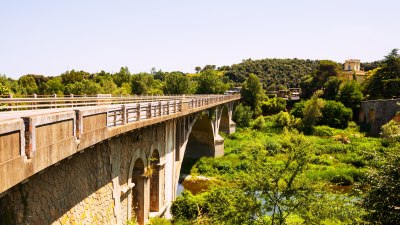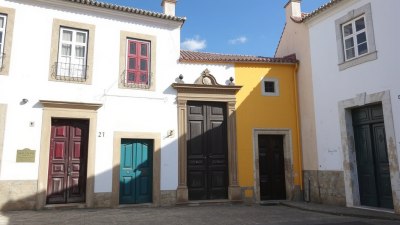Quiet Rebellion Beneath the Walls of Évora, Portugal
Explore the historical and cultural significance of Évora's quiet rebellion beneath its ancient walls.

Deep within the heart of Portugal lies the enchanting city of Évora, a place where history whispers through its cobblestone streets and ancient walls. Nestled in the Alentejo region, Évora is celebrated for its rich tapestry of cultural heritage, weaving together threads from the Roman, Moorish, and Christian epochs. Among its varied attractions, the concept of a quiet rebellion forms an intriguing narrative that echoes through the ages, an undercurrent of resistance and identity shaped by the land and its people.
The Historical Landscape of Évora
Évora’s historical significance can be traced back to its Roman roots, which established it as a pivotal administrative and commercial center in the region. The well-preserved ruins of the Temple of Diana, a majestic structure dedicated to the Roman goddess, stand as a testament to this era. Today, they contest the passage of time, much like the spirit of rebellion that lies dormant beneath the surface. Évora continued to thrive through subsequent invasions, evolving into a Moorish stronghold before falling into Christian hands in the late 12th century. This layered history provides a rich context for understanding the quiet rebellion that characterizes the city’s identity.
The Quiet Rebellion Defined
But what does a quiet rebellion entail? It is not a loud, boisterous uprising but rather a subtle, often overlooked form of resistance against external forces seeking to dictate a culture’s values, traditions, and practices. In the context of Évora, this rebellion manifests in the steadfast preservation of local traditions, languages, and lifestyles that resist homogenization in the face of modern influences. While cities around the world may succumb to the pressures of globalization, Évora stands as a bastion of authenticity, where the rhythms of daily life reflect an enduring connection to the past.
Cultural Preservation in Modern Times
One of the primary expressions of this quiet rebellion is seen in the realm of gastronomy. Évora's culinary scene showcases regional produce and traditional recipes, drawing on the land’s bounty and crafting a narrative that involves family, history, and identity. Local markets teem with fresh herbs, cheeses, and wines, each telling a story of the people who cultivate them. Restaurants feature dishes that have traveled through time, steeped in flavors that echo back to the city’s longstanding agricultural practices. In this way, the citizens of Évora assert their cultural identity through the act of cooking, resisting the dominance of global fast-food chains.
Artistic Expressions of Resistance
The quiet rebellion also finds expression through the arts. Évora has a vibrant creative scene, where local artists draw inspiration from the city’s landscapes, traditions, and history. Street art, local galleries, and public installations serve as a canvas for commentary on contemporary issues while celebrating Évora's heritage. This artistic movement often highlights social issues and reflects a dialogue with the past, weaving in a narrative that confronts modernity with the richness of history. By showcasing unique artistic expressions, the community not only preserves its identity but also engages and invites others to partake in its story.
The Role of Festivals in Cultural Identity
Festivals in Évora are another crucial component of this quiet rebellion. With events like the Festa de São João, the city honors its patron saint with parades, traditional music, and regional dishes. Each festival serves as a poignant reminder of the local community’s values, beliefs, and cultural practices. These celebrations foster a sense of belonging among residents, reinforcing their identity and connection to the past while allowing visitors a glimpse into the soul of Évora. The careful conservation of these traditions amidst changing societal norms exemplifies the quiet resilience of its people.
Challenges Amidst Rebellion
However, this quiet rebellion is not without its challenges. The pressures of urbanization and commercialization threaten to encroach upon the traditional fabric of Évora. As tourism increases, so too does the risk of eroding the very characteristics that make the city unique. Many locals express concerns over the commodification of their culture, where practices may be altered or diluted to cater to the whims of visitors. This tension encapsulates the ongoing struggle between preservation and adaptation—a delicate balance that may define the future of Évora's identity.
Community Initiatives and Activism
In response to these challenges, grassroots movements have emerged, driven by passionate individuals dedicated to preserving Évora’s heritage. Various organizations work tirelessly to promote local artisans, support independent businesses, and encourage sustainable tourism practices that align with the community's values. Initiatives aimed at educating both locals and visitors about the city's history and traditions seek to foster a deeper appreciation for what makes Évora special. This activism represents a collective vision of the community and underscores the importance of involvement in nurturing its quiet rebellion.
Legacy and Forward Momentum
The legacy of Évora’s quiet rebellion is not confined to its past. It informs the current generation, who carry the torch of cultural preservation into the future. In an ever-globalizing world, Évora stands resilient, embodying a spirit of defiance that champions the importance of cultural identity. Through a commitment to authenticity, it inspires other cities to embrace their unique histories and foster their own quiet rebellions.
In summation, the quiet rebellion beneath the walls of Évora, Portugal, represents a profound narrative of cultural preservation and identity. This city, steeped in history, navigates the complexities of modernity while clinging to the threads of its past. The expression of this rebellion through culinary traditions, artistic endeavors, festivals, and community initiatives paints a picture of resilience and hope. As Évora continues to honor its heritage, it invites all to join in the celebration of its unique story—one that resonates far beyond its ancient walls.











